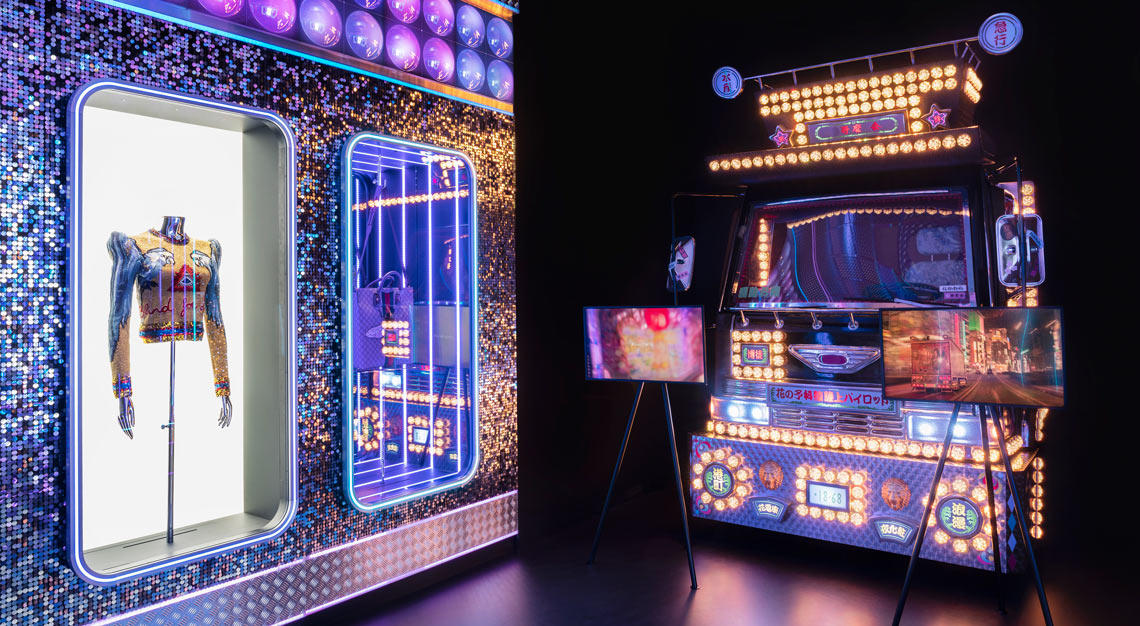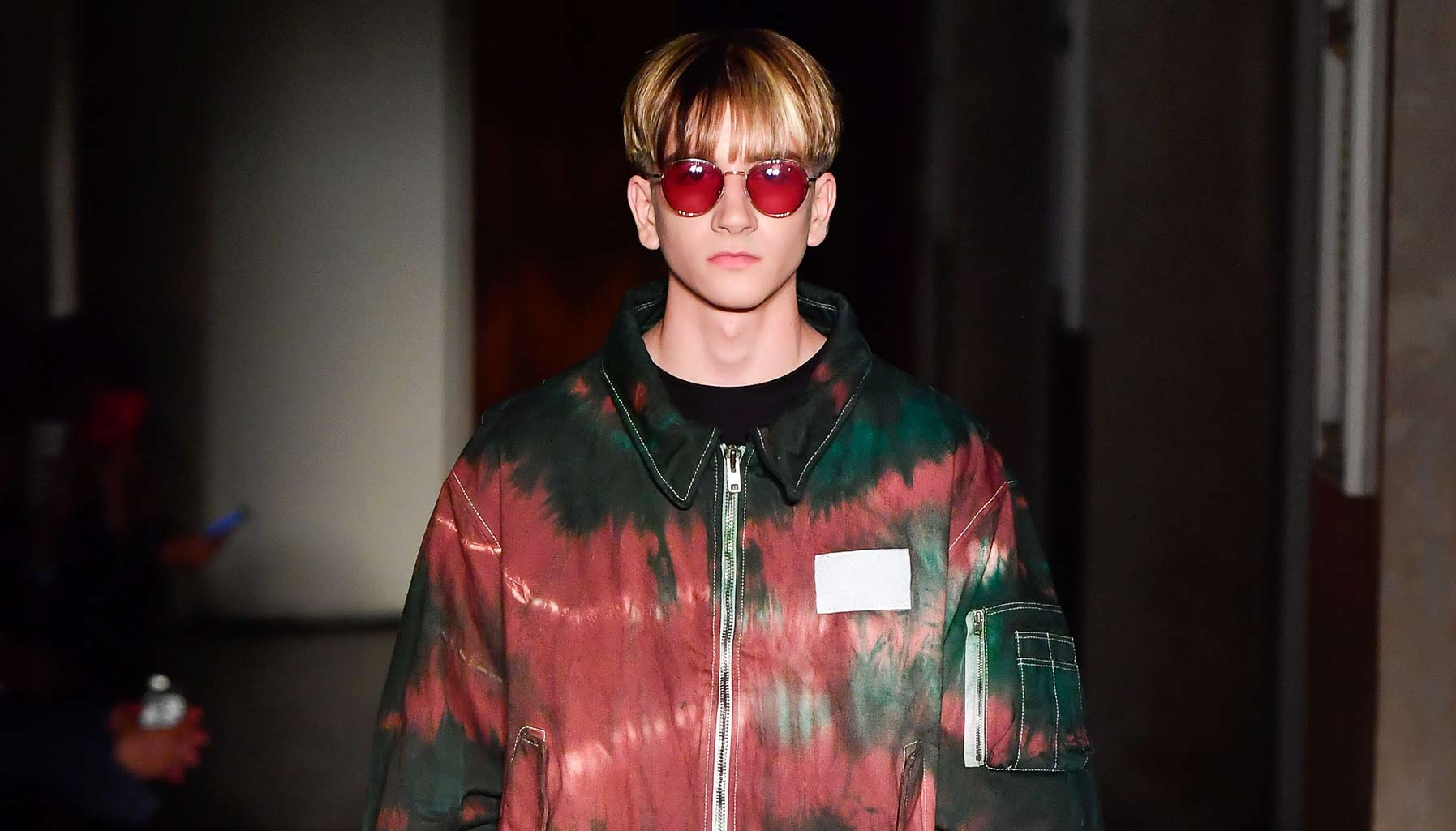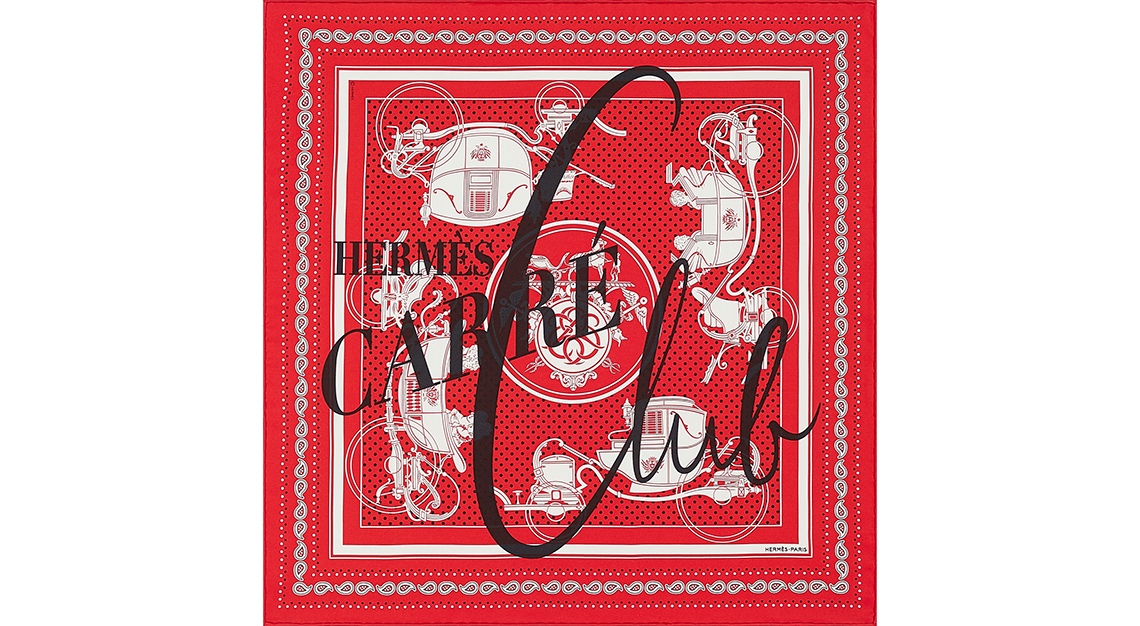The Answers With… fashion designer Kris Van Assche, whose new book captures evolving practice amidst broader cultural shifts in the fashion industry
Renowned for his roles at Dior, Berluti, and his eponymous brand, Kris Van Assche finally reflects on an influential journey spanning two decades. The visual compendium, crafted by illustrious art directors M/M (Paris), chronicles 55 collections and collaborations, with his unique perspective on and off the runway. Featuring an introduction by fashion writer Anders Christian Madsen and testimonials from collaborators, the book captures Van Assche’s evolving practice amidst broader cultural shifts in the fashion industry. Here, we get a quick retrospective on his retrospective.
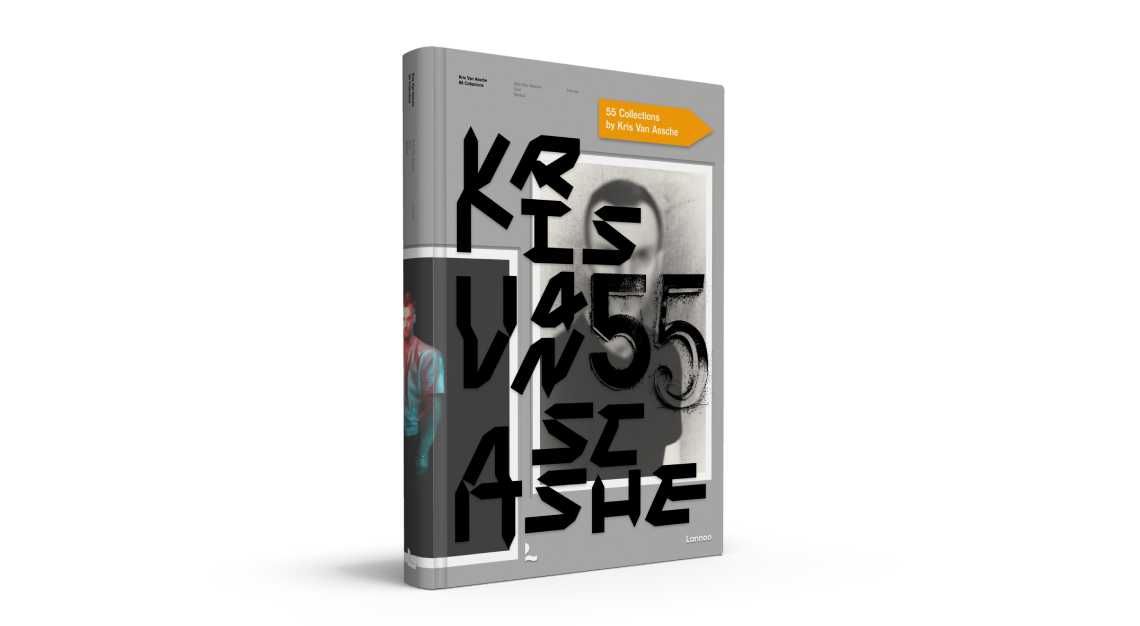
I read that the reason for releasing the retrospective now was because you finally had the time.
In August of last year, Belgian publisher Lannoo reached out with the proposal of doing a book about my work covering my career so far: my own Kris Van Assche brand, but also Dior and Berluti. 18 years in total of non-stop working. I had never been so keen on looking back; a designer is only as good as his next collection, and at the speed of two, four or six collections a year, there had never been much time for that. Last August all at once seemed like the perfect timing.
Were there any other triggers that sparked the idea to put it together in a book?
I have always collected books from artists and other designers—I love books—so the idea of making one of my own had obviously crossed my mind. Also, with much more free time on my hands, my brain had already started a process of self-inspection. It’s an automatic thing. I had been the designer of my own, small independent brand for 11 years, the creative director for the mega-brand Dior for 11 years also, and three years for the more confidential, artisanal ‘luxury pearl’ Berluti.
I was questioning what I would like to do next, where to position myself within these three very different directions. Doing the book made me understand the clear links between those different collections and see how everything connects. I now realise my ‘Berluti man’ is actually much alike my ‘Kris Van Assche man’—he simply looks much more expensive (laugh). It is something I had never thought of so much.
Did other formats cross your mind or did you already have a concrete concept of how you visualised it?
After leaving Berluti, I started a second social media account, as a way of arranging memories in my head. As I said before, those 18 years of designing had been intense and I started looking for recurring themes, obsessions. I quite liked the format of the three squares Instagram offers, as I had been in charge of three brands, there was a mathematical way of looking for similarities between those three, by aligning three images. But there is obviously a limit to that exercise, and I do not believe there is anything better than a beautiful book for in depth understanding.
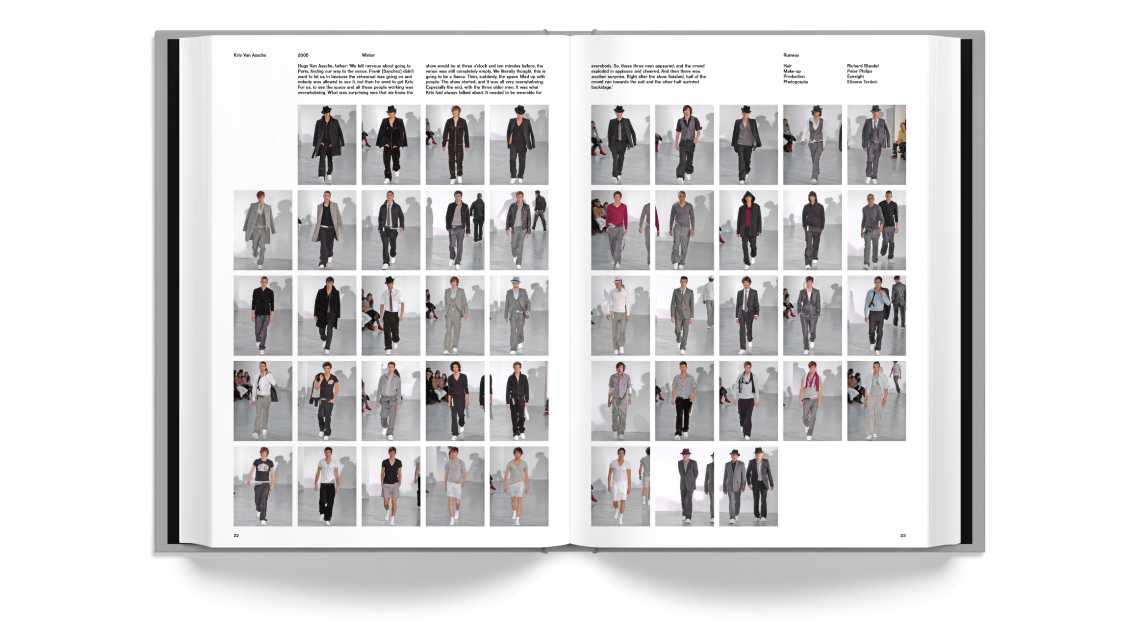
You get pretty personal in the book. Was the experience uncomfortable or more of a catharsis?
It was a little bit of both. Even though I must have given thousands of interviews in the past, people still think of me as rather private and discrete. This is because I have always thought the work should do the talking, that it didn’t have to be about me. But as this book is about 18 years of my life, if not more, it is not just about explaining a collection or a theme, it is about a global view. So, it made sense to be more personal.
Was there anything new you discovered about yourself in the process of looking back?
It is funny how sometimes the smallest detail can put a negative stamp on a memory, a moment. Maybe there was one really bad review, or one of the boys’ ties wasn’t hanging straight… These minor things can be enough for a collection to provoke an uncomfortable feeling. Now, looking back after all these years, with a certain distance, I rediscovered some of those shows and collections and was able to like them again. Doing a book is a bit of a creative psychoanalysis! (laughs) I also noticed many recurring themes and obsessions, something I had never really thought of that much.
Was there a pivotal moment within your time in the industry that reshaped your approach to fashion?
Obviously, there have been a few of those moments, the first being when I quit being an assistant at Dior and launched my own brand. Actually, even before that when I moved to Paris and started as an intern at YSL: the way of working there, of thinking about fashion, was radically different from what I had learned at the Antwerp Academy, it was much more ‘couture’. Starting as the creative director for Dior in 2007 was also a massive moment, and changed my career forever. To be able to work with the crafts people in the Atelier has been an exceptional and formative experience.
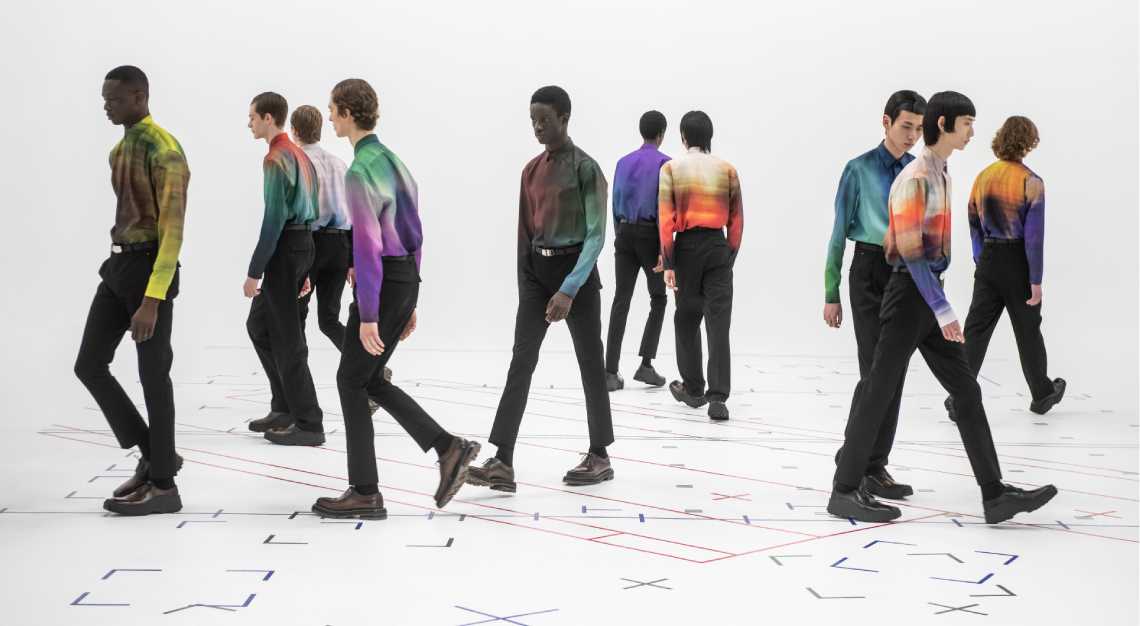
Collaborations have been a significant part of your career—how do you choose your collaborators?
I feel extremely lucky seeing all the incredible people I have had the chance to work with. It’s great to see them all together in one book. It is what I have always loved most about my job: being able to connect and interact with other creatives. I remember buying my first book on Paolo Roversi; I now have my portraits taken by him on the cover of this book. Thinking of the campaigns I did for my brand, be that with Alessio Bolzoni or Jeff Burton; both were so creatively free and it makes me proud I was able to do that.
Seeing all the great campaigns with Willy Vanderperre for Dior and the incredible talents we associated. And the artists I was able to collaborate with at Berluti: Brian Rochefort and Lev Khesin. It was never about the hype, but about opening up the DNA of the brand. They were different expressions of a same idea. I love how many of these artists contribute testimonies to the book. It allows for different layers of comprehension, different points of view on a specific show or photoshoot. The idea was never to pick people for their number of followers, if you know what I mean… A$AP Rocky, Boy George, Pet Shop Boys, Rami Malek, were shot together with more confidential men like my favorite Belgian contemporary artist Rinus Van de Velde, French actor Rod Paradot or my fitting model Dylan…
Together, they formed a community. It was both about showing different ideas of masculinity, and about conveying a message. A$AP Rocky—who came to many of my shows and whose personal knowledge of fashion I had discovered—was a way of connecting the world of Dior Couture with his ‘more street oriented’ audience. Boy George—whom I have loved since I was a teenager—stands for self-acceptance, and therefore felt like his message was needed.
Your career is filled with highlights in the eyes of many, but how do you personally measure or define success?
I have been concentrating on the past for the last year, but it is not something I usually do so much. I am more concentrated on the future. The book made me realise what it is exactly I love so much about fashion, and so obviously, I want some more. I am waiting, be that a little impatiently, on the right project to dive into.
Main photo by Paolo Roversi

